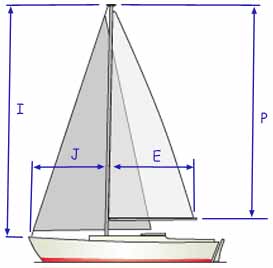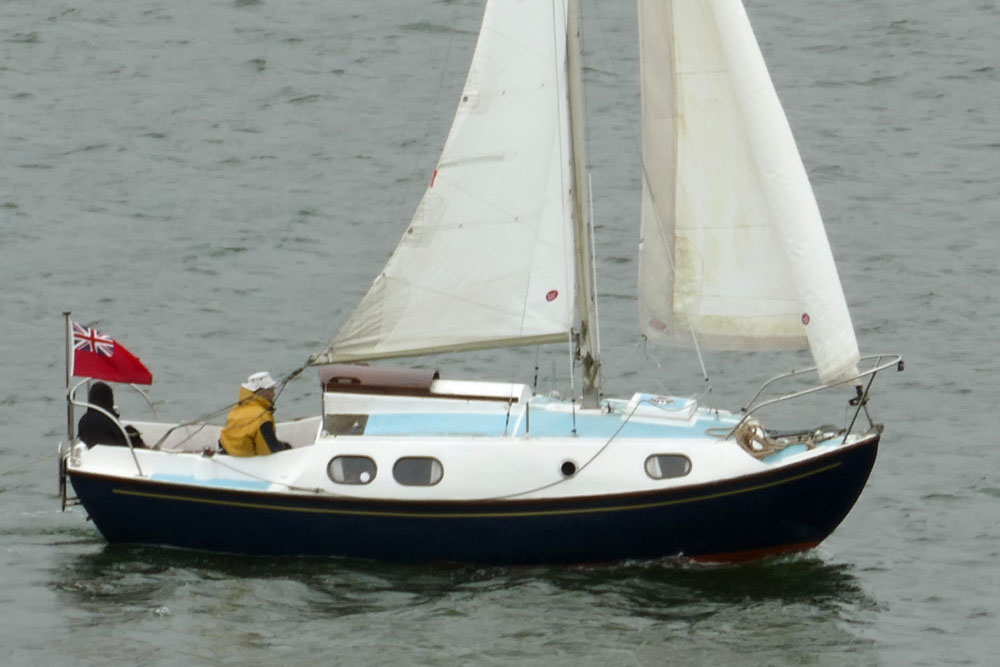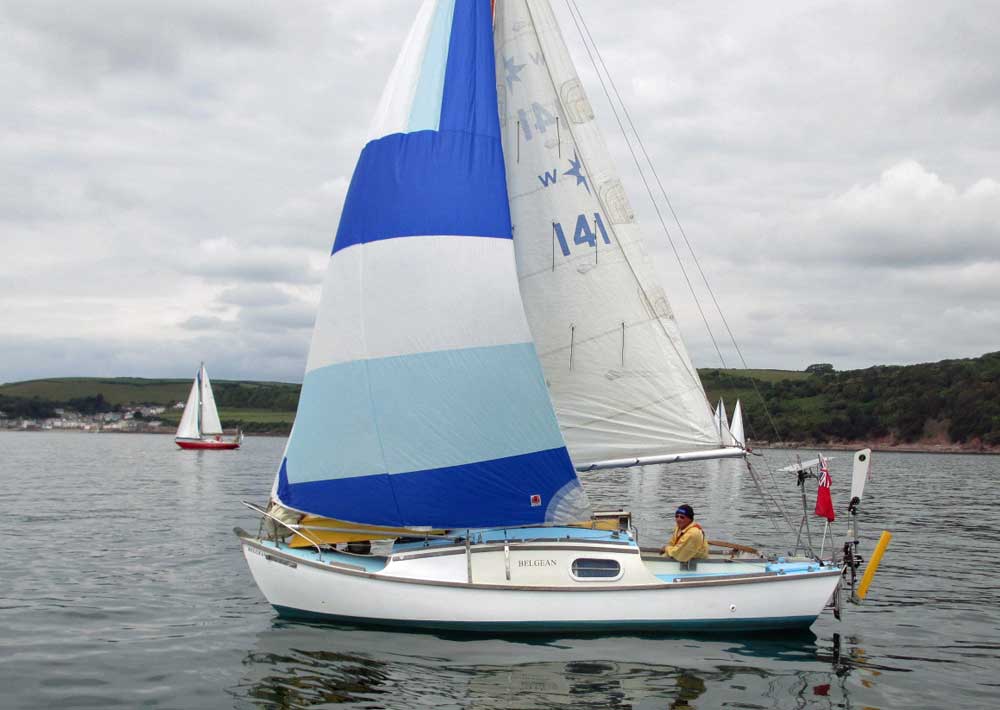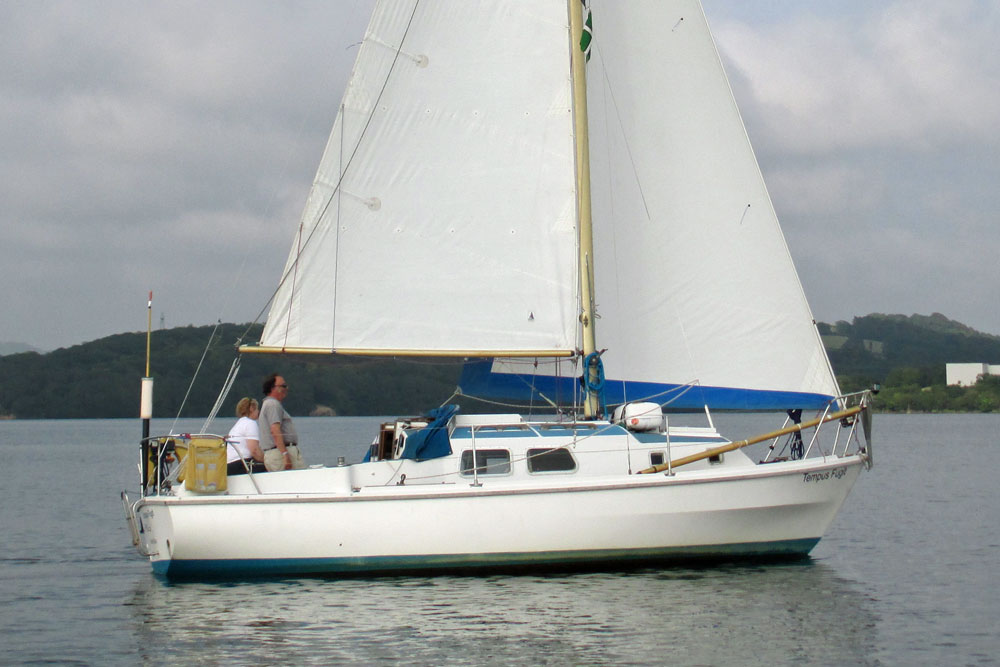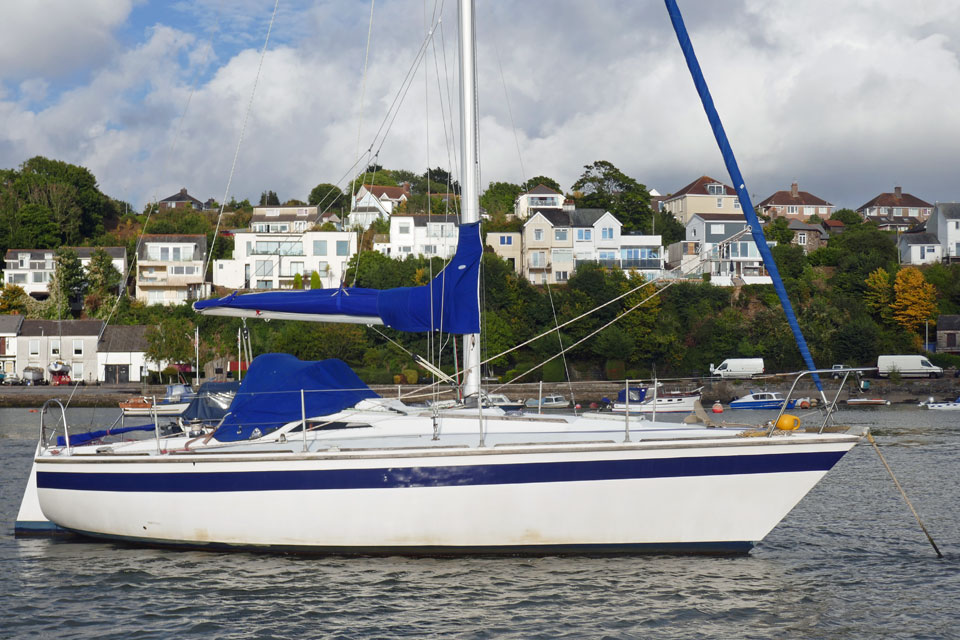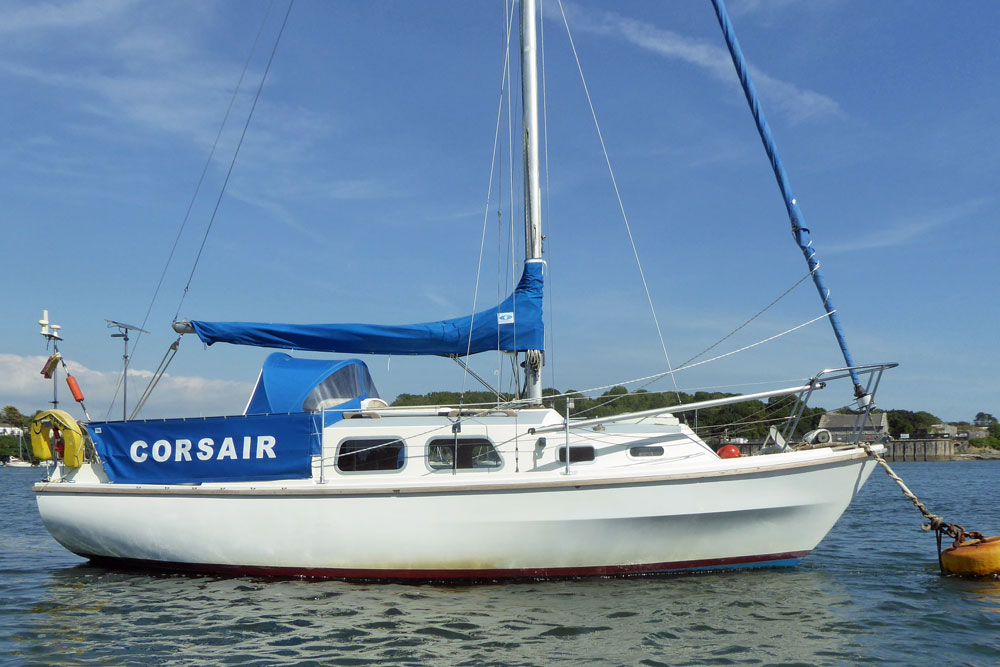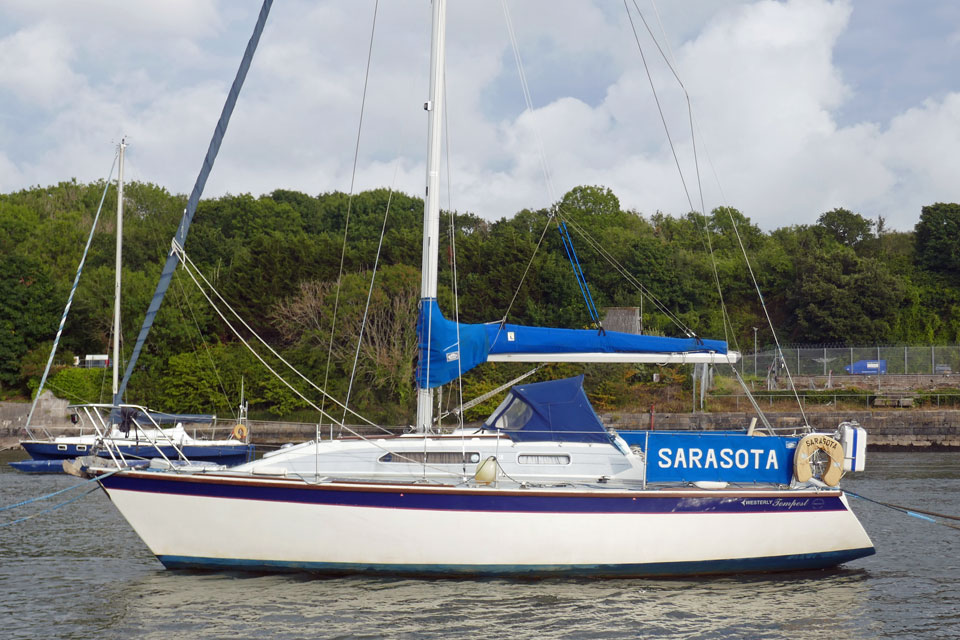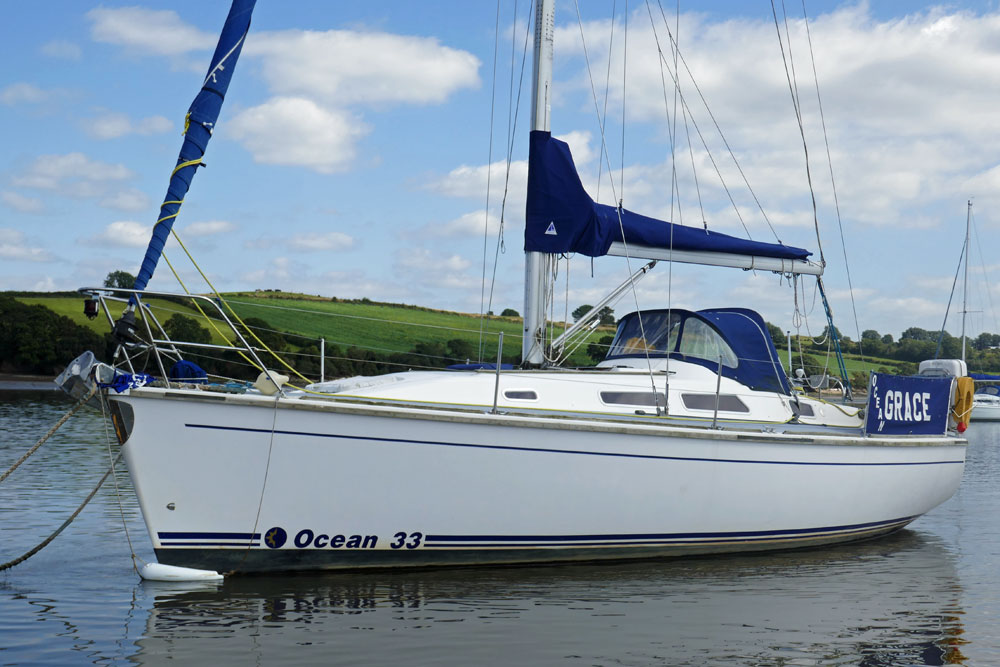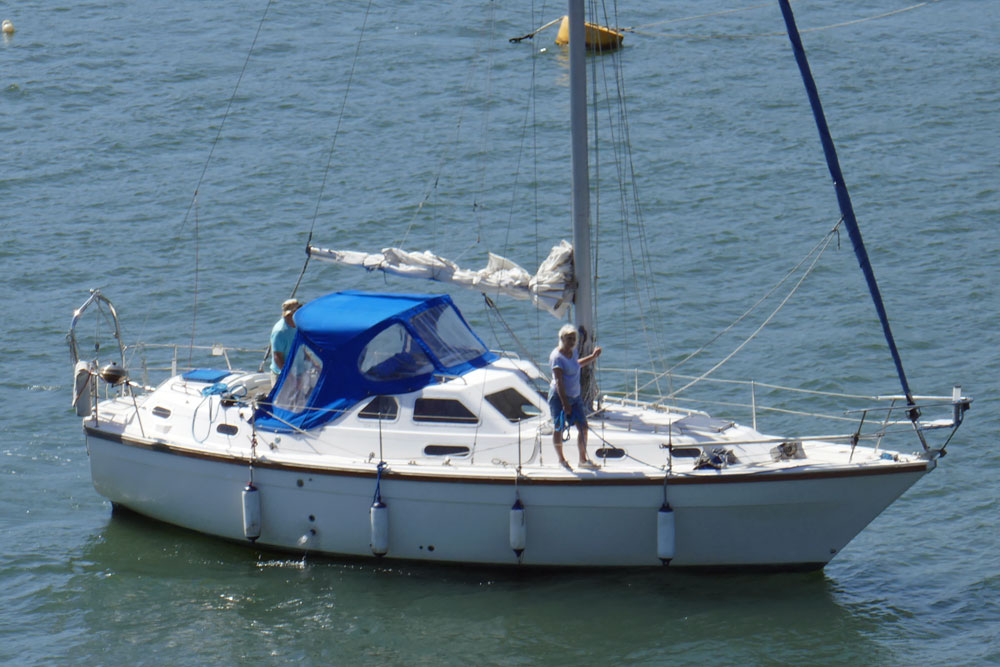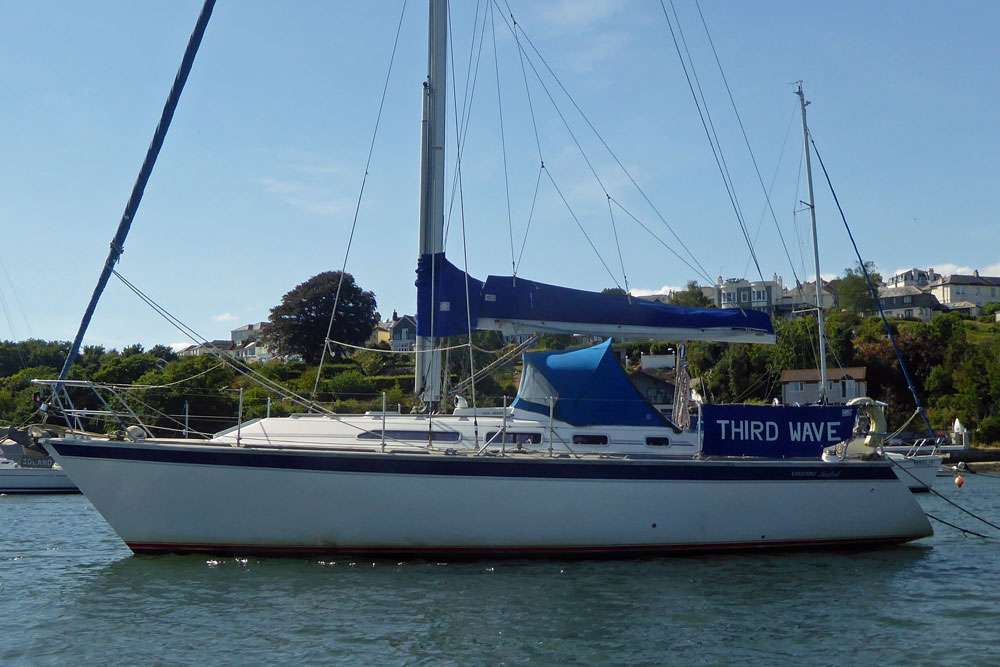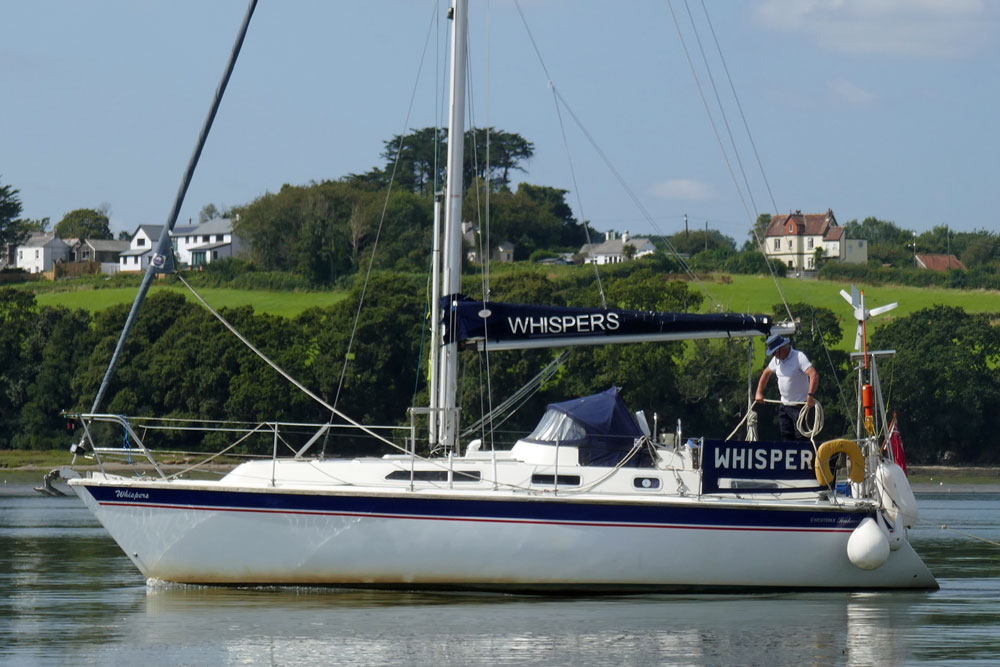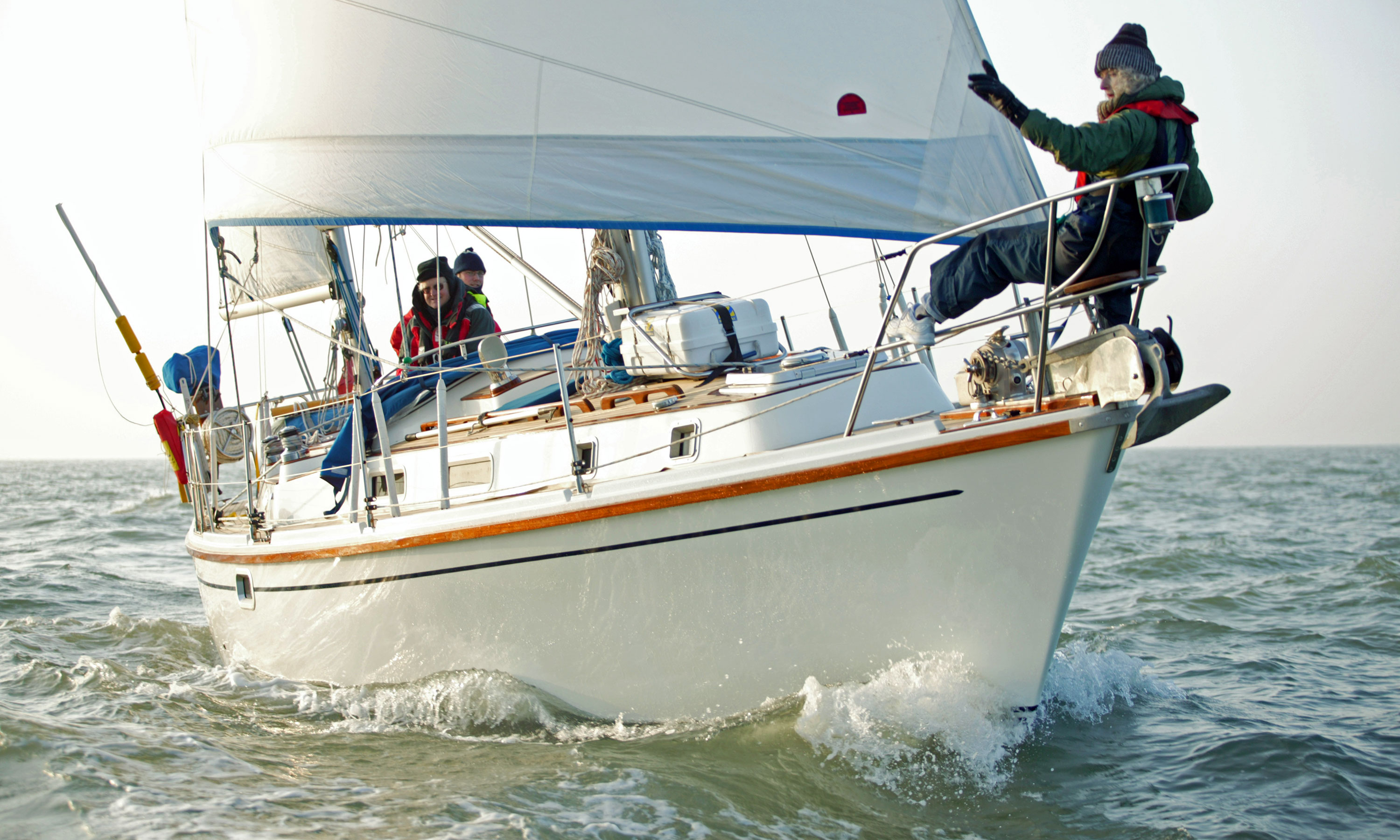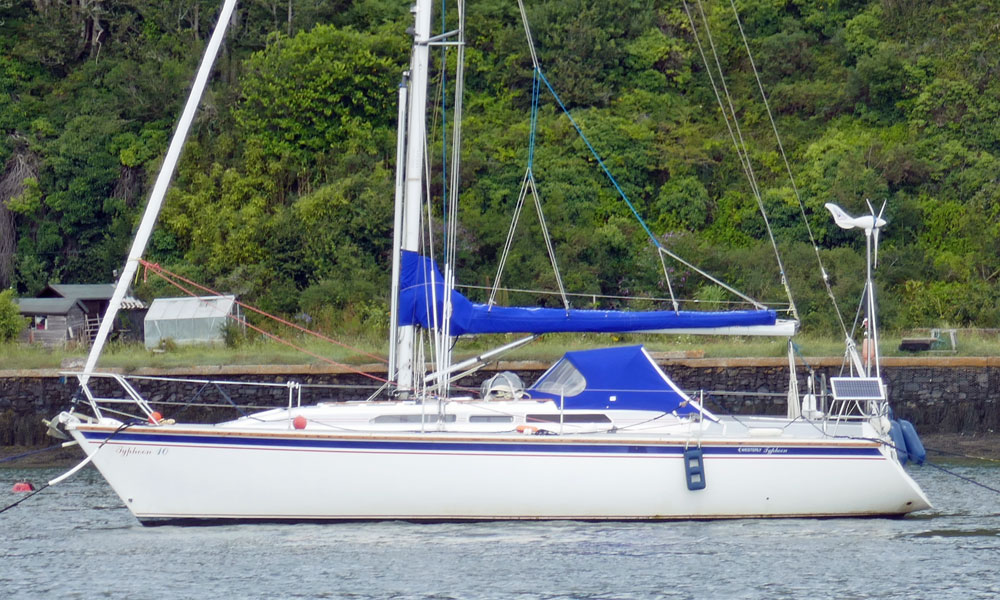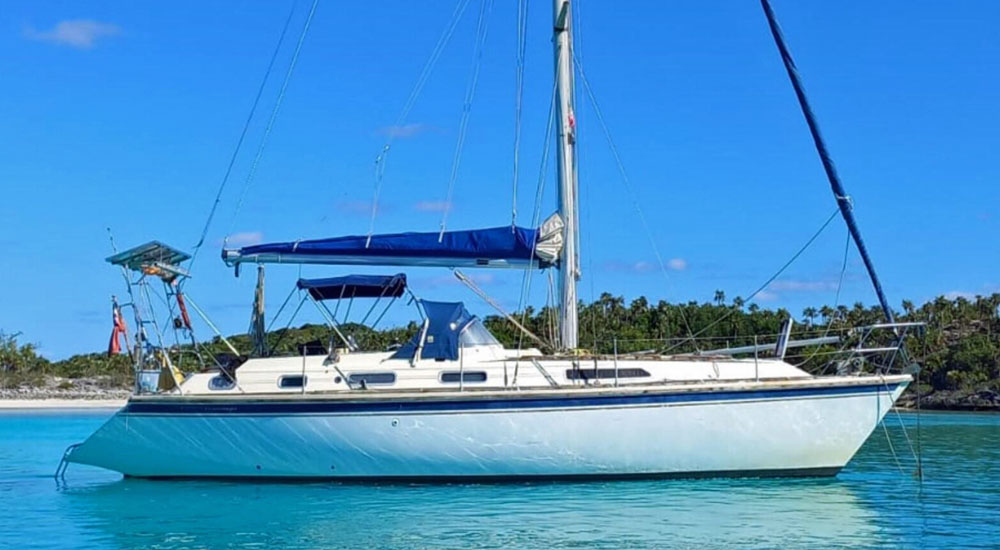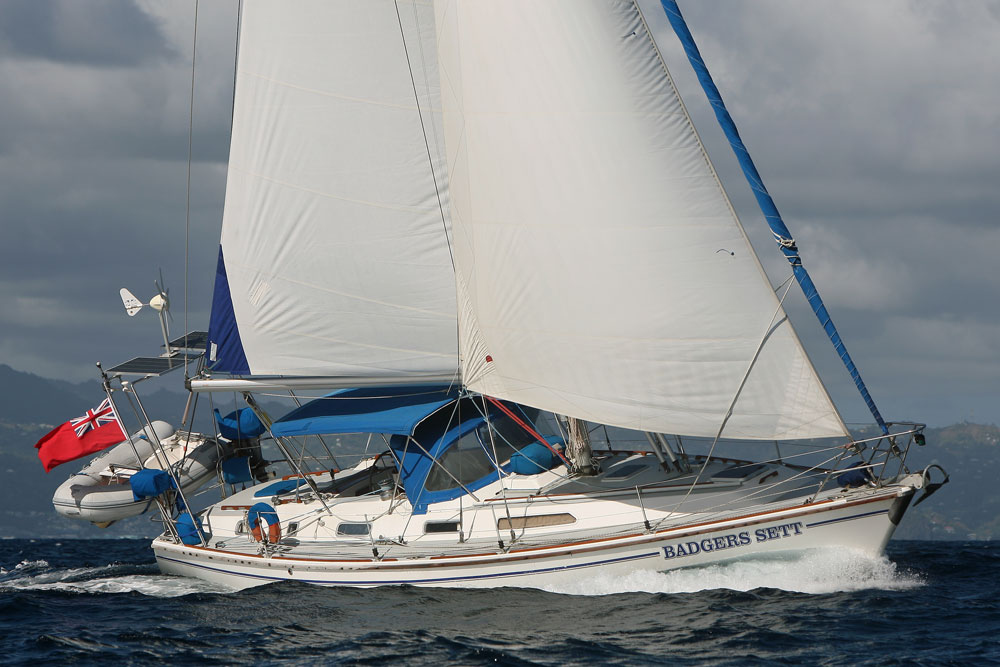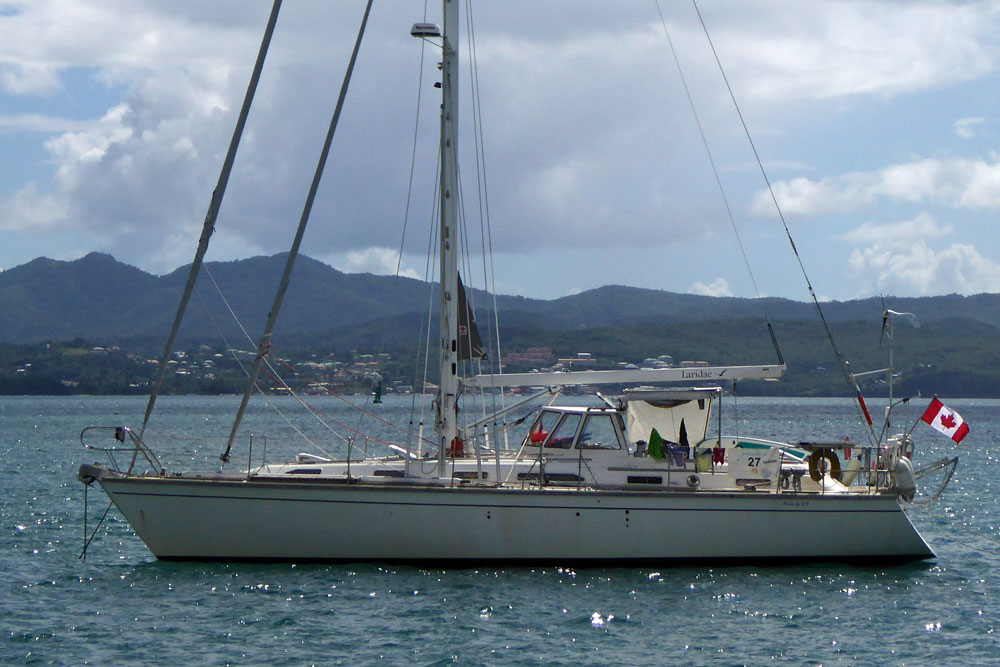- Home
- Cruising Yachts 30' to 35'
- Westerly Discus 33 Sailboat Specs
The Westerly Discus 33
Specs & Key Performance Indicators
The Westerly Discus 33 sailboat, designed by British naval architect Jack Laurent Giles, was built by Westerly Marine Construction Ltd. in Waterlooville, Hampshire, UK.
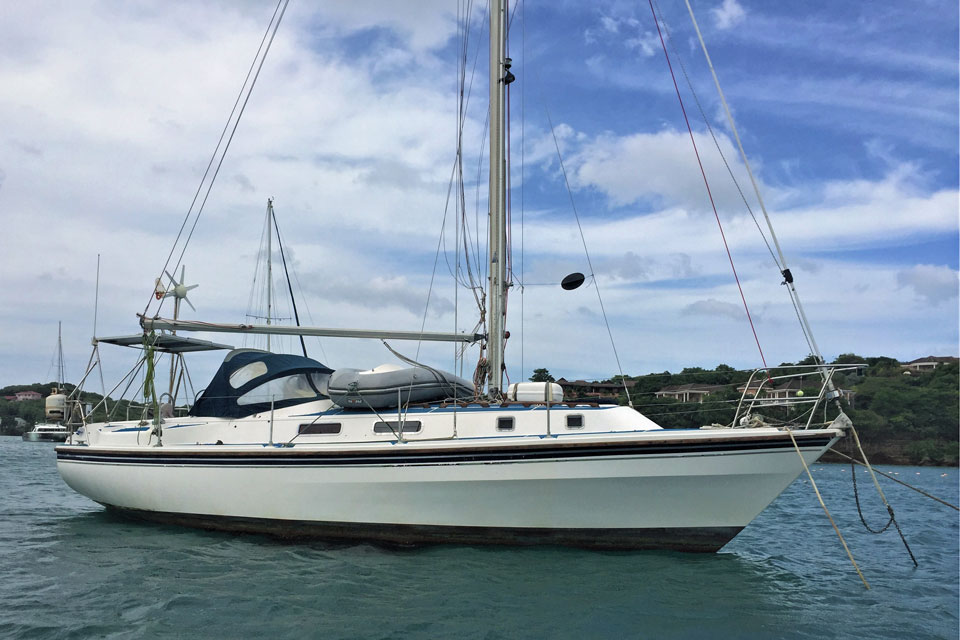 The Westerly Discus 33
The Westerly Discus 33Published Specification for the Westerly Discus 33
Keel & Rudder Configuration: Fin keel with rudder on partial skeg
Hull Material: Fiberglass (GRP)
Length Overall: 10.14m (33'3")
Waterline Length: 8.68m (28'6")
Beam: 3.40m (11'2")
Draft: 1.68m (5'6")
Rig Type: Masthead Sloop
Displacement: 6,854 kg (15,097 lbs)
Ballast: 2,793 kg (6,047 lbs)
Water Tank Capacity: 204 litres (45 gallons)
Fuel Tank Capacity: 136 litres (35 gallons)
Hull Speed: 7.15 knots
Designer: Jack Laurent Giles
Builder: Westerly Marine Construction Ltd.
Year First Built: 1979
Year Last Built: 1984
Options, Alternatives & Variations
There were later versions of the Westerly Discus 33 sailboat produced. The primary variations included:
- Bridge Deck Version: Introduced in 1980, this version featured an aft cockpit with a broad, high bridge deck between the cockpit well and the main hatch. This design provided a more sheltered lounging space but made ingress to the saloon more awkward.
- Centre Cockpit Version: This version was more similar to the original Westerly 33, featuring a walkthrough to the aft cabin instead of a cockpit hatch. It offered a different layout and slightly different handling characteristics.
- Rig Options: While the original Discus 33 was primarily a masthead sloop, later versions also offered a ketch rig as an option.
Sail Areas & Rig Dimensions
Sail Area (100%): 48.87m² (526ft²)
I: 13.09m (43'0")
J: 4.21m (13'10")
P: 11.58m (38'0")
E: 3.13m (10'3")
Published Design Ratios
The Key Performance Indicators (KPIs)
The following analysis of the design ratios gives an indication of the boat's likely sailing characteristics, but see the 'Notes of Caution' below:
- Sail Area/Displacement Ratio (13.83): This ratio is below 16, indicating that the Westerly Discus 33 is relatively underpowered. It suggests that the boat will not have high performance in terms of speed and may perform slower, particularly in light wind conditions, than other similar-sized sailboats with a higher ratio.
- Ballast/Displacement Ratio (40.05%): At just over 40%, this ratio indicates a stiff and powerful boat. The Westerly Discus 33 will be able to stand up to the wind effectively, contributing to a stable and upright sailing experience, which is particularly beneficial in stronger wind conditions.
- Displacement/Length Ratio (291.76): This places the boat in the heavy displacement category (275-350). A heavy displacement boat typically offers a smoother and more comfortable ride, can carry more stores and equipment, and will be more forgiving in rough sea conditions but sacrifices speed and agility.
- Comfort Ratio (31.38): With a comfort ratio in the range of 30 to 40, the Westerly Discus 33 is expected to have a reasonably sedate motion, suitable for moderate bluewater cruising. This means it should provide a more comfortable experience for the crew during long passages, reducing the likelihood of motion-induced discomfort in choppy sea conditions.
- Capsize Screening Formula (1.81): A capsize screening value of 1.81 indicates good bluewater capability, as it is well under the threshold of 2.0. This makes the Westerly Discus 33 a suitable choice for ocean passages, with lower vulnerability to capsizing even in rough seas.
Summary:
The Westerly Discus 33 is a well-balanced bluewater cruiser designed with comfort and safety in mind rather than high performance. It is underpowered for competitive sailing, but its stiffer build and heavy displacement offer stability and a smooth ride in various sea conditions. The moderate comfort ratio ensures that it will be reasonably sedate and comfortable over long distances, making it a good choice for sailors planning extended offshore and ocean voyages.
Here's how to calculate the KPIs yourself - without having to wrestle with the mathematics...
Design Ratios: Notes of Caution...
- The Sail Area/Displacement Ratio (SA/D): This ratio provides an estimate of the sail power relative to the boat's weight, which can indicate potential speed in various wind conditions. But it doesn't account for the efficiency of the sail plan, the rigging, or the skill of the crew. Real-world performance can vary significantly based on these factors.
- The Ballast/Displacement Ratio (B/D): This ratio gives an idea of the boat's stability and stiffness, which is crucial for handling and safety. But it doesn't consider the distribution of the ballast or the hull shape, both of which can greatly affect stability. A high B/D ratio alone doesn't guarantee a stable boat if the ballast is poorly distributed.
- The Displacement/Length Ratio (D/L): This ratio helps predict the boat's speed potential and its behaviour in different sea conditions. But it doesn't account for the hull design or the boat's overall weight distribution. Two boats with the same D/L ratio can perform very differently if their hull shapes are different.
- The Comfort Ratio (CR): This ratio estimates the boat's motion comfort in a seaway, which is important for long passages. But it doesn't consider the boat's interior layout, which can also affect comfort. Additionally, personal tolerance to motion varies, so a boat that is comfortable for one person might not be for another.
- The Capsize Screening Formula (CSF): This formula assesses the likelihood of a boat capsizing in heavy seas, which is critical for offshore safety. But it doesn't take into account the boat's handling characteristics or the skill of the crew. A boat with a low CSF can still capsize if poorly handled in severe conditions.
General Limitations
- Static Nature: These ratios are static measurements and don't account for dynamic factors like wave action, wind gusts, or crew actions.
- Simplification: They simplify complex interactions into single numbers, which can be misleading. Real-world performance is influenced by a multitude of factors that these ratios can't fully capture.
- Context: The context in which the boat is used (e.g., coastal cruising vs. offshore racing) can greatly affect how these ratios should be interpreted.
In summary, while these ratios provide valuable insights into the theoretical performance characteristics of a sailboat, they should be used as part of a broader assessment that includes practical experience, sea trials, and expert advice.
Other sailboats in the Westerly range include:
This article was written with the assistance of Gemini, a large language model developed by Google. Gemini was used to gather information, summarize research findings, and provide suggestions for the content and structure of the article.
Recent Articles
-
Is An SSB Marine Radio Installation Worth Having on Your Sailboat?
Apr 14, 25 02:31 PM
SSB marine radio is expensive to buy and install, but remains the bluewater sailors' favourite means of long-range communication, and here's why -
Correct VHF Radio Procedure: Your Questions Answered
Apr 14, 25 08:37 AM
Got a question about correct VHF radio procedure? Odds are you'll find your answer here... -
VHF Marine Radio; Which One is Right for Your Boat?
Apr 14, 25 05:09 AM
If you're looking to buy a VHF Marine Radio the choice can be a bit overwhelming. So what should it be, a fixed VHF or a handheld VHF? Maybe one with AIS or GPS built in perhaps?
